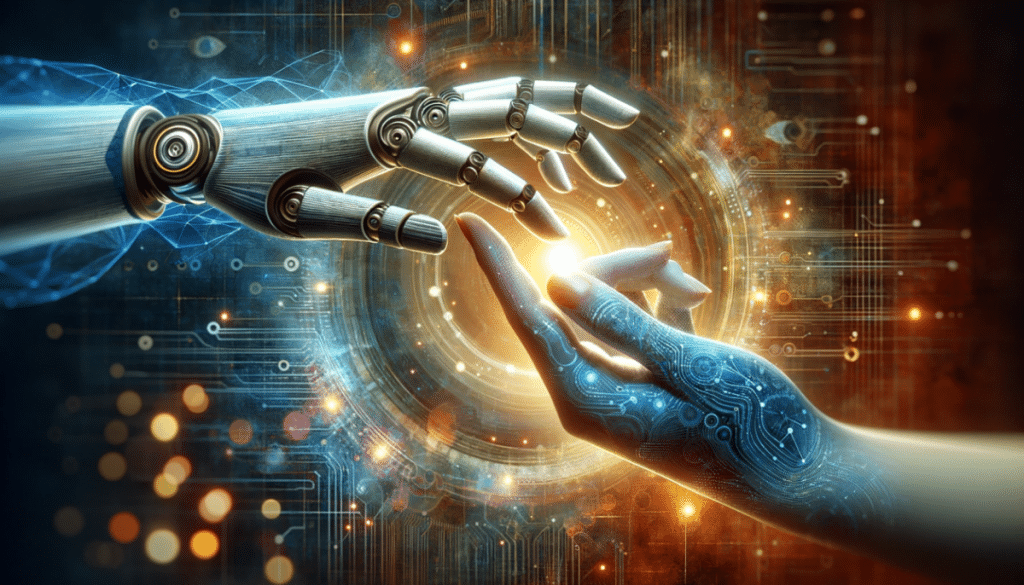In the rapidly evolving world of artificial intelligence, the pursuit of creating machines that understand and interact with humans on a deeply personal level has been a primary goal. Among the many advancements, Humanizer AI stands out as a groundbreaking tool that promises to revolutionize how we perceive and utilize AI in our daily lives. As an SEO writer for Humanize AI, I’m excited to delve into the unique features and benefits of Humanizer AI, showcasing why it’s a game-changer in the AI landscape.
What is Humanizer AI?
Humanizer AI is an advanced AI tool designed to bridge the gap between human communication and artificial intelligence. Unlike traditional AI models that often struggle with understanding nuances, emotions, and context, Humanizer AI is engineered to emulate human-like interactions with remarkable accuracy. This tool leverages cutting-edge natural language processing (NLP) algorithms, deep learning techniques, and vast datasets to create responses that feel genuinely human.
The Need for Humanizer AI
In today’s digital age, the interaction between humans and machines is becoming increasingly frequent and complex. From customer service chatbots to virtual assistants, the demand for AI that can understand and respond to human emotions is higher than ever. Traditional AI models often fall short in this aspect, leading to frustrations and miscommunications. Humanizer AI addresses these challenges by offering a more intuitive, empathetic, and context-aware communication solution.
Key Features of Humanizer AI
1. Emotion Recognition and Response
One of the standout features of Humanizer AI is its ability to recognize and respond to human emotions. By analyzing text and vocal cues, the AI can detect emotions such as happiness, sadness, frustration, and excitement. This emotional intelligence enables Humanizer AI to tailor its responses accordingly, providing a more personalized and satisfying interaction.
2. Contextual Understanding
Humanizer AI excels in understanding context, which is crucial for meaningful conversations. It can keep track of previous interactions, remember user preferences, and adapt its responses based on the ongoing dialogue. This contextual awareness ensures that the AI can provide relevant and accurate information, enhancing the overall user experience.
3. Natural Language Processing
At the core of Humanizer AI is a sophisticated NLP engine that enables it to comprehend and generate human-like text. This engine is trained on diverse datasets, allowing the AI to understand various dialects, slang, and idiomatic expressions. As a result, Humanizer AI can engage in fluid and natural conversations, making interactions seamless and enjoyable.
4. Personalization
Humanizer AI can personalize interactions based on user data and preferences. Whether it’s addressing users by their names, remembering past interactions, or tailoring recommendations, the AI creates a unique and personalized experience for each user. This level of personalization fosters a stronger connection between users and the AI, promoting trust and satisfaction.
Applications of Humanizer AI
The versatility of Humanizer AI makes it applicable across a wide range of industries. Here are some key areas where this tool can make a significant impact:
1. Customer Service
In customer service, empathy and understanding are crucial. Humanizer AI can handle customer inquiries with a human touch, addressing concerns and providing solutions with empathy and precision. This not only improves customer satisfaction but also enhances brand loyalty.
2. Healthcare
In the healthcare sector, Humanizer AI can assist in patient interactions by providing empathetic and context-aware responses. Whether it’s scheduling appointments, offering medical advice, or providing emotional support, the AI can significantly improve the patient experience.
3. Education
Humanizer AI can revolutionize the education sector by providing personalized tutoring and support to students. It can adapt to different learning styles, offer customized feedback, and create an engaging learning environment, helping students achieve their academic goals.
4. Entertainment
In the entertainment industry, Humanizer AI can enhance user experiences by offering personalized recommendations, engaging in interactive storytelling, and creating immersive gaming experiences. The AI’s ability to understand and respond to user emotions can make entertainment more interactive and enjoyable.
The Future of Humanizer AI
As AI technology continues to advance, the potential of Humanizer AI is limitless. With ongoing research and development, we can expect even more sophisticated and intuitive interactions in the future. Here are some exciting possibilities:
1. Advanced Emotional Intelligence
Future iterations of Humanizer AI could possess even greater emotional intelligence, enabling them to detect and respond to subtle emotional cues with unprecedented accuracy. This could lead to more meaningful and supportive interactions.
2. Cross-Platform Integration
Humanizer AI could be integrated across various platforms and devices, creating a cohesive and unified user experience. Whether it’s on smartphones, smart speakers, or virtual reality systems, users could enjoy seamless interactions with the AI wherever they go.
3. Enhanced Personalization
With access to more user data and advanced algorithms, Humanizer AI could offer even more personalized and tailored experiences. This could range from personalized health advice to customized entertainment recommendations, making the AI an indispensable part of daily life.
Conclusion
humanizeai.pro represents a significant leap forward in the world of artificial intelligence. By combining emotion recognition, contextual understanding, advanced NLP, and personalization, it offers a truly human-like interaction experience. As we move towards a future where AI plays an increasingly integral role in our lives, Humanizer AI stands out as a beacon of innovation and potential. Whether it’s in customer service, healthcare, education, or entertainment, this tool has the power to transform how we interact with technology, making our interactions more intuitive, empathetic, and satisfying.
